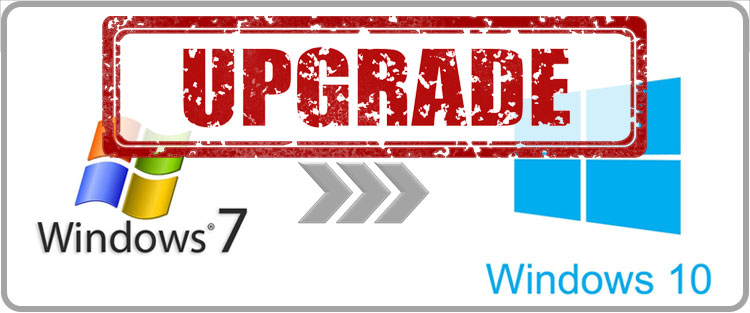As many of you know Windows 7 is no longer available to purchase. Furthermore, as of the 14th of January, Microsoft have stopped supporting it. However some users are resisting the upgrade to Windows 10 and are staying firm with their Windows 7 Operating System.
Like it or not, the time has come to upgrade. Moreover what you may not know is that if your PC came with Windows 7 pre-installed, it may be time to upgrade that too.
There is some resistance from Windows 7 users to move to Windows 10. Not only is a fear of the unfamiliar a deterrent but there is also a familiarity with Windows 7 and its features. More importantly, there is also a concern that your current PC may not be compatible with Windows 10. This concern is well founded.
Did you know that most computers are designed to last 4 years?
It is a fact that pc’s with built-in Windows 7 are no longer up to date and may not be compatible with the latest apps and softwares. For instance, in the case of RAM, your computer’s memory storage: Windows 7 systems may get by with 4GB of RAM, but Windows 10 performs best with 8GB RAM and above. As a result, users would need to buy new computer or at the very least upgrade their RAM hardware.
Over the course of 10 years, the Mechanical Hard Drive of your Windows 7 PC would have travelled to the moon and back roughly 13 times.
To put it into context: If you have an older Windows 7 computer and it has a mechanical Hard Drive, it would likely be spinning at a rate of 7200 revolutions per minute (rpm). Also most users don’t tend to turn their PC’s off. Consequently a 10 year old computer, spinning 7200rpm day and night would have travelled 6,210,230 km! That is quite a distance for a relatively small machine to accomplish. In fact, it may have earned its right to retire.
There is an upside, Windows 10 has brand new features. Likewise it is more graceful than Windows 7, therefore generally performing better. Some features include:
- Desktop and security improvements
- Updated look – start up menu and apps
- Improved features for notifications and search
- Built-in Voice Assistant Cortana
- Better compatibility with the latest apps
- Even better battery life on mobile devices
So there you have it, your incentive to make the move and get your upgrade. Finally don’t forget that we’re on hand to support.
Get in touch and we will work with you to update your Windows. Similarly, we will also review your current PC and advise of all upgrades or suitable replacement options.
Here are some related articles you may find useful:
Just because Microsoft sells Windows 7 support doesn’t mean you can buy it
What good is extended support for an aging OS if you can’t find a reseller to sell it to your company?
Microsoft to end updates to Windows 7’s free AV software, Security Essentials
When support for Windows 7 ends on Jan. 14, Microsoft will also stop providing new malware signatures for its home-grown Security Essentials software.
What happens after Windows 7’s retirement?
The January end-of-support deadline for Windows 7 is fast approaching. Here’s a rundown of some of the issues companies should keep in mind as that date draws near.




